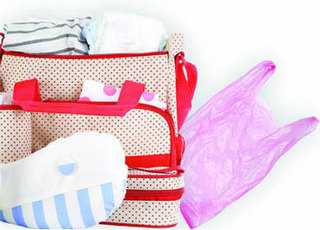Changing your baby’s nappy as soon as possible after a wee or poo will help prevent nappy rash.
Young babies may need changing up to 10 or 12 times a day. Older babies need to be changed around 6 to 8 times. You will soon see a pattern for your baby.
If you have any concerns, contact your public health nurse (PHN) or GP.
What you need to change a baby’s nappy
Be prepared. Wash your hands and get everything ready before you begin.
You will need:
- a basin filled with warm water
- a clean nappy
- clean clothes
- towels
- some cotton wool
- nappy disposal bag
Do not use baby wipes until your baby is 4 weeks old. Plain water with no soap or detergent is best for the first month. If you use baby wipes after 4 weeks, make sure they have no fragrance and are alcohol-free.
Use your elbow to make sure the water is not too hot. Your hands are not sensitive enough.
The temperature should be about 36 degrees Celsius. You can use a bath thermometer to check this.
Where to change a nappy
Use a surface that's safe for you and your baby. For example, a mat on the floor, a bed or a changing table.
If you are using a bed or changing table, make sure everything you need is within reach.
Important
Never leave your baby alone on a raised surface, even for a few seconds. Babies can roll off changing tables, beds and other raised surfaces. These falls can result in serious head injuries.
How to change a baby's nappy
- Wash your hands before removing the nappy.
- Clean your baby's genitals and bottom with cotton wool and water, or with an unscented wipe.
- Gently lift your baby’s legs by holding their ankles. This lets you clean underneath.
- Always wipe from front to back.
- For a baby boy, there is no need to retract the foreskin. Point his penis downwards before replacing the nappy.
- Let the area dry. There is no need to use powders.
- Slide a new, open nappy under your baby by gently lifting their legs at the ankles. The new nappy should be snug but not tight.
- Wash your hands after changing the nappy.

Building a bond
Nappy changes are a chance to build a bond with your baby.
Talk to your baby, explain what you are doing, while singing and playing with them.
Suffocation risk - nappy bag or sack

Nappy disposal bags and sacks and other plastic bags can suffocate babies. The material of a nappy sack can cling to your baby’s face and be hard for them to remove.
Do not store nappy sacks or any other plastic material within your baby’s reach. For example, on the baby changer, cot, crib or anywhere your baby could crawl.